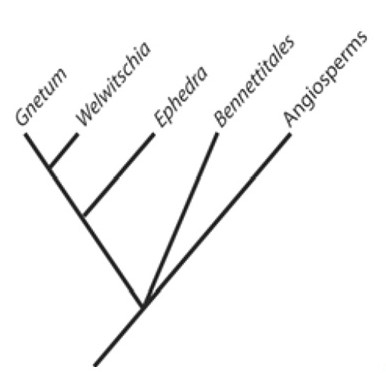Introduction
Magnolia is among the largest genus flowering plants in Texas and eastern of North America. Magnolia is derived from a French botanist Pierre Magnol after discovering the plant in the Royal Botanic Garden of Montpellier in France. The taxonomic classification of the Magnolia tree is as follows: The domain of the tree is Eukarya belonging to the kingdom Plantae. The sub-kingdom is Tracheobionta, Superdivision Spermatophyta, and division of Magnoliophyta. The sub-class of Magnolia tree is Magnoliidae, order Magnoliales, and family of Magnoliaceae. The genus of Magnolia tree is Magnolia with over 13 accepted species. The major species found in Texas is the Magnolia grandiflora. The common name of the tree is the southern magnolia (Williams, 2007).
Life Cycle
The description of the Magnolia grandiflora life cycle is according to the native tree species found in the southern and eastern Texas. The tree starts from the seeds that get grown in tree-nursery to form seedlings. Later, the seedlings get transferred to a terrain land, where the tree grows to a height of 90 feet tall. The major type of soil that is tolerable to the efficient growth of the Magnolia grandiflora tree is loamy, well drained, and slightly acidic soil. The tree also requires a moderate water supply for moderate growth. Vegetative propagation of Magnolia grandiflora takes place during the first year of the growing season in order to form new cultivars that flower at an earlier age (Williams, 2007).
The diversification of Magnolia grandiflora species is due to the presence of new cultivars. Magnolia grandiflora has evergreen leaves, which sometimes fall off and inhibit the growth of other plants beneath the tree. The mature tree is adorable due to its glossy evergreen leaves with white fragrant flowers. In addition, the trees have tighter, denser canopy with a characteristic of a rusty bronze appearance (Williams, 2007).
Structure and Function
Magnolia grandiflora has evergreen broad leaves to make it tolerant and reliable during harsh weather conditions especially winter and summer seasons. The tree has brown beauty bark, flowery petals and perfect fragrant in order to make suitable hedge and attract insects that enhance cross-pollination. The tallness and hardness of the tree make it suitable for the manufacture of furniture. The Magnolia grandiflora develops deep tap roots in order to obtain the underground water reservoirs and enhance growth especially during dry seasons. As the tree grows old, it develops lateral roots for attachment and assist in the development of fluted-base to enhance stability. The tree is an excellent seed producer, hence making it easy to propagate and sustain the tree for decades. Additionally, the tree has edible seeds, fruits and leaves in which the major consumers are ruminant wildlife animals (Williams, 2007).
Seeding of the southern magnolia starts at 10 years, and massive seed production takes place at the age of 25 years. The seeds are averagely heavy, hence making them easy to disseminate through birds, mammals, heavy rains, and insects. The adaptability of the tree growing in rich, loamy and moist soils makes the tree reliable for long term scientific studies and economic use. Southern magnolia is well adapted to fire due to its cork layer bark that is resistant to heat and does not burn easily (Williams, 2007).
Evolution of the Organism

Phylogenetic tree describing the evolution of Magnolia grandiflora.
The evolution of Magnolia grandiflora get basis from the fact that some flowering plants are either monocotyledon or dicotyledonous. Angiosperms are flowering monocots. In some situations, molecular phylogenetic techniques get applied to identify the natural group of the southern magnolia. Early angiosperms lacked distinct sepals and petals, a distinct characteristic of flowering plants. Petal fusion has occurred several times during the evolutionary period of angiosperms. Early stages of evolution would result in the development of colored stamen that would attract insects and visitors. The four major parts of evolution that have resulted in the development of Magnolia grandiflora are evolution toward having few plant parts, reduction of floral whorls, ovary becoming inferior, and radial symmetry of early flowers. The radial symmetry of the flowers gives rise to bilateral symmetry that makes the flowers regular and attractive (Williams, 2007).
The recent molecular phylogenetic analysis using DNA sequencing methods supports the phylogenetic studies through morphological data. According to geological and fossil data, magnolia genus get dated 20 million years old, and plants belonging to the Magnoliaceae family get dated 95 million years ago. It is believed that the evolution of the Magnolia grandiflora floral structures took place before the appearance of bees, hence cross-pollination is majorly by beetles (Williams, 2007).
Additional Interests
The additional interest of Magnolia grandiflora, is that the plant is valued and usually planted as ornamental. The fruits, wood, leaves, and bark extracts are potential applications for medicinal and pharmaceutical importance. The tree is excellent in urban landscaping since it is resistant to acidic depositions in the soils. The southern magnolia is susceptible to frost and Polyporus fungus infection, especially during the winter season. It is interesting to note the seasonal development of Magnolia grandiflora; flowering takes place between April and June while fruit ripening takes place from September (Williams, 2007).
References
Williams, M. D. (2007). Identifying trees: an all-season guide to eastern North America. Mechanicsburg, PA: Stackpole Books.